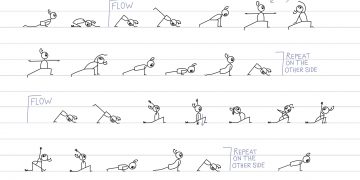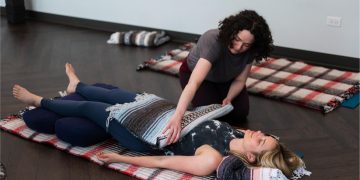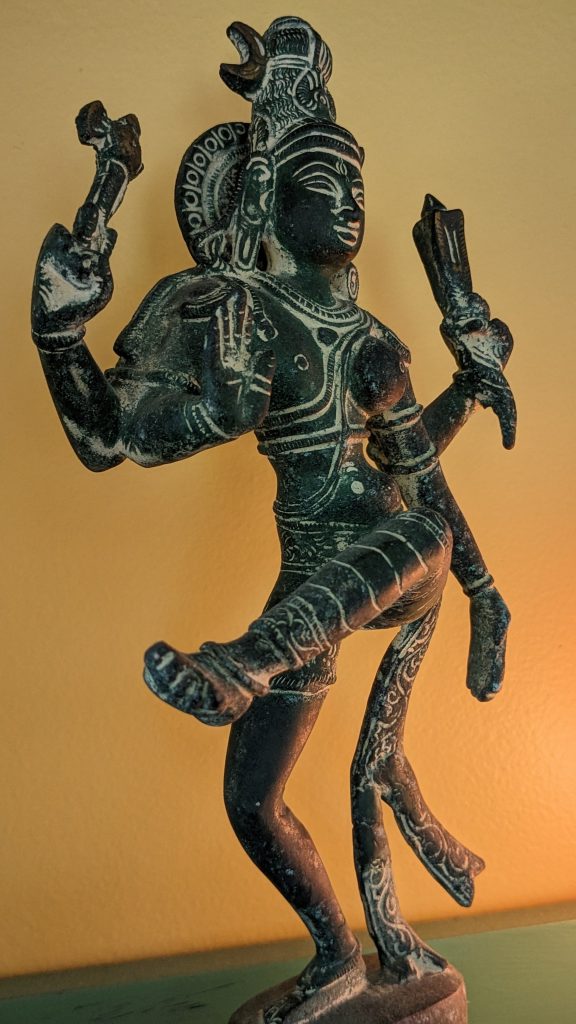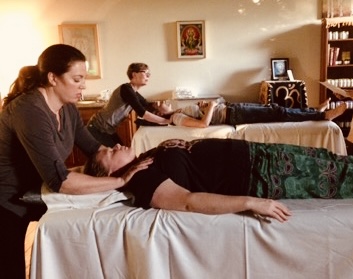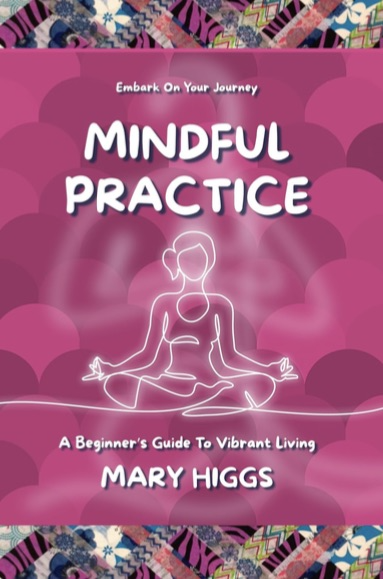According to Traditional Chinese Medicine theory the seasons of spring and summer are yang energies. Yang energies represent energetic, fast, fiery moving energy. This may be an easy time to feel burnout lurking around the corner mentally, physically, and/or spiritually.
The belief that everything in the cosmos exists as dependent and contradictory opposites originates from the philosophical concept of Yin and Yang. They remind us to simply slow down in the seasons of yang energy. Balancing out the yang energies with a yin yoga practice will be very transformative and beneficial for your physical and mental health.
What is yin yoga?
Yin yoga is a much slower paced class than traditional yang style yoga classes like vinyasa. Yang style yoga classes focus on the bigger muscle groups and strength; yin yoga classes take the yogis’ attention inward – focusing on the connective tissues such as the fascia. Yogis traditionally hold poses in yin yoga classes anywhere up to three minutes or longer. These long held poses generate a more meditative practice, allowing the yogi to notice any feelings arising physically in the body or internally in the emotional landscape.
A slower paced yoga, addressing the emotions surfacing during yin yoga practice may be difficult. Remind yourself it’s normal to become more aware of your inner chatter during a yin class, to observe these feelings and emotions, and to simply let them pass without judgment. Approaching the body and mind during your yin yoga practice with grace and compassion is essential.
What are the benefits to yin yoga?
Practicing yin yoga during the yang seasons will help one find balance and harmony physically and emotionally. Yin yoga can help increase mobility and flexibility, improve circulation throughout the body, and can even help reduce feelings of stress and anxiety. Yin yoga activates the parasympathetic nervous system which calms the body and slows down the heart rate. The long held passive poses of yin yoga allows the body to release any tension in the physical muscles along with the emotional and energetic bodies. This slower meditative practice allows yogis to become more aware of their internal landscapes and to move through emotional blocks with their breath, compassion, and awareness. Finding your edge during practice and surrendering into it can help one feel relaxed and fulfilled on and off the mat.
When should I practice yin yoga?
A great practice to implement during any part of the day, studies show yin yoga to be most beneficial in the morning or in the evening. For the physical benefits of yin yoga, the morning is the best time to practice; for the physiological benefits, the evening is best. Yin yoga is an excellent practice in the morning when the body is cool and the mind peaceful. You can maximize the benefits of yin yoga with cool muscles, allowing the deeper layers of the body to fully absorb the stretch. Yin yoga is also helpful to practice during the evening to allow the mind to let go of everything from the day, promoting calmness to the mind for a deep nourishing sleep.
Try these six yin yoga poses the next time you need a nourishing, meditative yoga practice.
Start your practice with a seated or lying down meditation with the intention of grounding your energy into mother earth. Here, breathing exercises can also be used.

Half frog on the right

Sphinx

Half frog on the left

Crocodile

Reclined butterfly
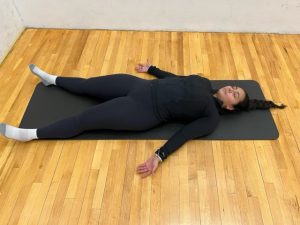
Shavasana
Emma Gerads is a certified RYT 200 & Yin Yoga instructor through yoga alliance. She spent the last two years working in Tucson, Arizona broadening her community and connection to spirit. Certified in Reiki & Animist Reiki, Emma worked with the spirit world over the last 3 years. Emma’s connection with spirit allows her to help her clients find the healing and guidance they seek. She welcomes all who feel drawn to the journey of healing.




